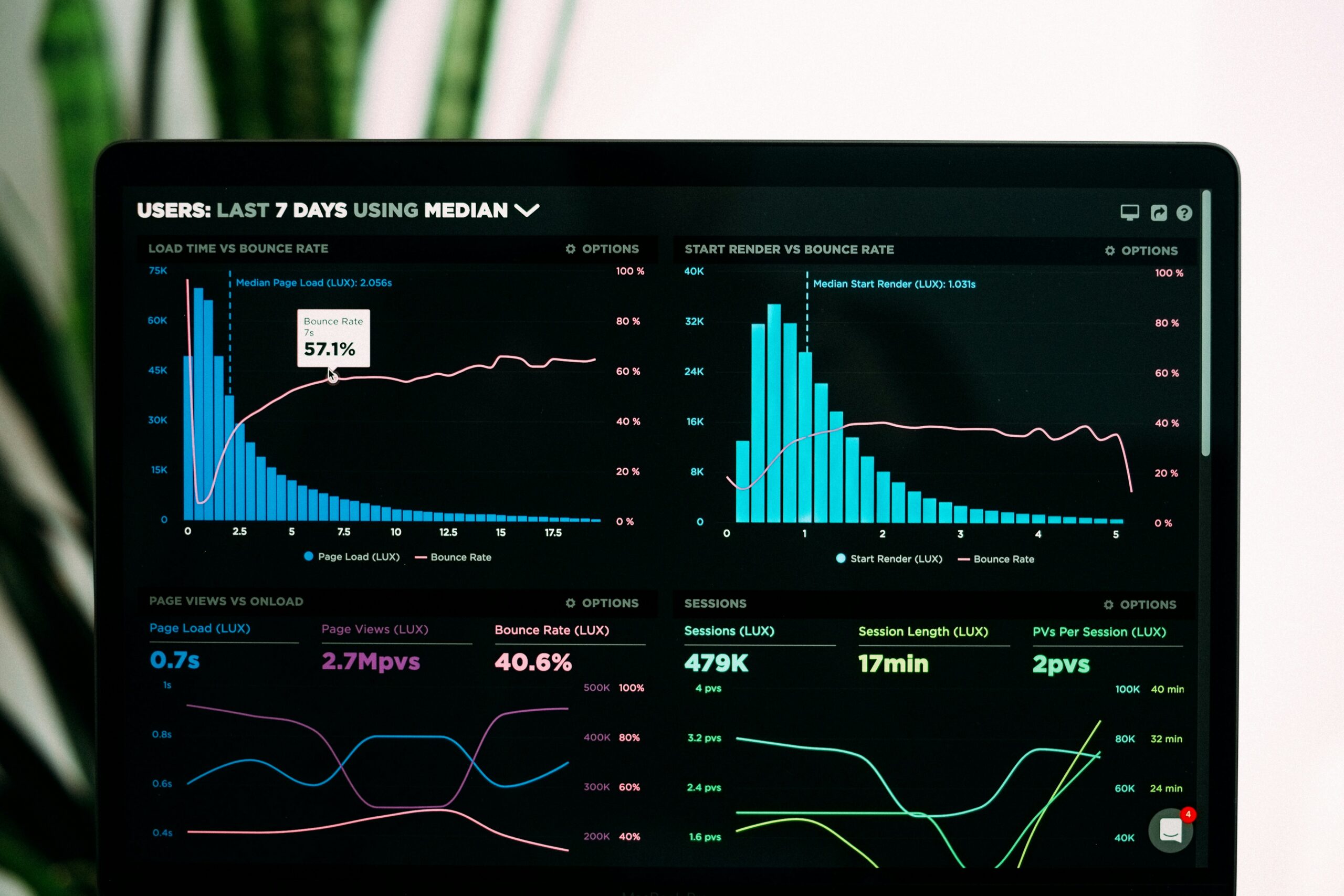Introduction to Website Speed
Website speed, often referred to as page load time, is the duration it takes for a webpage to fully display its content. The significance of website speed extends far beyond mere convenience; it is a critical factor that influences user experience, search engine optimization (SEO) rankings, and the overall success of a business. Users today expect websites to load quickly, and any delay can lead to frustration, prompting them to leave the site prematurely.
A fast-loading website is essential for providing a seamless user experience. Studies have shown that even a one-second delay in page load time can result in a significant increase in bounce rates – the percentage of visitors who navigate away from the site after viewing only one page. This negative impact on user engagement can be detrimental, especially for e-commerce websites, where slow load times can lead to a dramatic decrease in conversion rates. Potential customers are less likely to complete a purchase if they encounter slow pages, resulting in lost revenue and diminished customer loyalty.
From an SEO perspective, website speed is a critical ranking factor. Search engines like Google prioritize fast-loading websites in their search results, as they aim to deliver the best possible user experience. A slow website can hinder your search engine rankings, making it more difficult for potential visitors to find your site. This can lead to reduced organic traffic and, consequently, a decline in business opportunities.
Moreover, a fast website enhances overall business success by fostering a positive brand image. Users are more likely to perceive a fast-loading website as professional and trustworthy, which can lead to increased customer satisfaction and repeat visits. Conversely, a slow website can damage your brand’s reputation and deter potential customers.
In summary, website speed is a crucial component of a successful online presence. By understanding its importance and taking proactive measures to optimize it, businesses can improve user experience, boost SEO rankings, and ultimately achieve greater success in the digital marketplace.
Why Website Speed Matters
Website speed is a critical factor that can significantly impact both user satisfaction and business outcomes. A fast-loading website not only enhances user experience but also plays a pivotal role in search engine rankings and mobile accessibility.
One of the primary reasons why website speed matters is user satisfaction. Studies have shown that users expect web pages to load within two seconds or less. If a site takes longer to load, users are likely to abandon it. According to a report by Google, as page load time goes from one second to ten seconds, the probability of a mobile site visitor bouncing increases by 123%. This abandonment can lead to a substantial loss in potential leads and revenue.
Search engine rankings are another critical area where website speed holds significant importance. Google, for instance, considers page speed as one of the ranking factors in its algorithm. Faster websites are more likely to rank higher in search engine results, leading to better visibility and more organic traffic. A study by Backlinko found that faster-loading websites tend to rank higher than slower ones, reinforcing the importance of optimizing website speed to improve search engine performance.
The mobile experience also heavily relies on website speed. With mobile internet usage surpassing desktop usage, ensuring a fast mobile experience is crucial. Mobile users are often on-the-go and have even less patience for slow-loading websites. A report by DoubleClick suggests that 53% of mobile site visits are abandoned if pages take longer than three seconds to load. Therefore, optimizing for mobile speed is not just beneficial but essential.
Statistics and studies consistently demonstrate the strong correlation between website speed and user behavior. For example, Amazon reported that every 100ms of latency cost them 1% in sales. Similarly, Walmart found that for every one-second improvement in page load time, conversions increased by 2%. These examples underscore the undeniable impact of website speed on business outcomes.
In conclusion, website speed is a fundamental aspect of online success, influencing user satisfaction, search engine rankings, and mobile experience. Investing time and resources to optimize speed can yield significant benefits, from higher user engagement to improved conversion rates and search visibility.
How Website Speed is Measured
Website speed is a critical aspect of online performance, influencing user experience and search engine rankings. To comprehensively understand and measure website speed, various metrics are employed, each offering unique insights into different facets of performance.
Load Time is one of the most fundamental metrics. It refers to the total time taken for a webpage to fully load and display all its content. This includes everything from text and images to scripts and stylesheets. A shorter load time generally indicates a more efficient and user-friendly website. Tools like Google PageSpeed Insights and GTmetrix are commonly used to measure load time, providing detailed reports on the elements affecting it.
Time to First Byte (TTFB) is another crucial metric. It measures the time taken for a user’s browser to receive the first byte of data from the server after a request is made. TTFB is essential for understanding server responsiveness and network latency. Faster TTFB means that the server and network are performing efficiently. This metric can be assessed using tools like WebPageTest and the built-in network analysis features in browser developer tools.
The Page Speed Score is an aggregated metric that combines several performance indicators into a single score, typically ranging from 0 to 100. This score reflects the overall speed and optimization level of a website. Google PageSpeed Insights, for instance, provides a Page Speed Score along with actionable recommendations to improve performance. A higher score indicates better optimization and faster load times.
In addition to these metrics, tools like Lighthouse, Pingdom, and YSlow offer comprehensive analyses, measuring various aspects of website speed and providing suggestions for enhancement. By regularly monitoring these metrics, website owners can identify performance bottlenecks and make informed decisions to optimize their sites, ensuring a swift and seamless user experience.
Factors Affecting Website Speed
Website speed is a critical aspect of user experience and search engine ranking. Several key factors can influence the speed at which a website loads and operates. Understanding these elements is essential for optimizing performance.
Server Performance: The efficiency of the server hosting your website plays a significant role in website speed. High-performance servers with adequate resources can handle more simultaneous requests and deliver content faster. Conversely, overloaded or low-quality servers can cause slow load times and poor user experiences.
Image Optimization: Large, unoptimized images can drastically slow down a website. Optimizing images by compressing them without losing quality and using modern formats like WebP can significantly reduce load times. Implementing responsive images that adjust to different screen sizes and resolutions also helps improve speed.
Content Delivery Networks (CDNs): CDNs distribute content across multiple servers located around the globe. By serving content from a location closer to the user, CDNs can reduce latency and speed up load times. This is especially important for websites with a global audience.
Browser Caching: Browser caching allows frequently accessed resources to be stored locally on a user’s device. When a user revisits a website, the cached resources are loaded from the local storage rather than the server, resulting in faster load times. Properly configuring caching policies can lead to significant improvements in website speed.
Third-Party Plugins and Scripts: While third-party plugins and scripts can enhance website functionality, they can also negatively impact speed. Each additional plugin or script can add to the number of HTTP requests and increase the load on the server. Evaluating the necessity of each plugin and script and removing unnecessary ones can help maintain optimal website performance.
Incorporating these factors into your website optimization strategy is crucial for ensuring a fast and efficient user experience. By focusing on server performance, image optimization, CDNs, browser caching, and the careful management of third-party plugins and scripts, you can significantly improve your website’s speed and overall performance.
Optimizing Website Speed
Enhancing website speed is crucial for both user experience and search engine rankings. One of the most effective strategies is image compression. High-resolution images can significantly slow down a website. By compressing images using tools like TinyPNG or JPEG-Optimizer, you can reduce file sizes without compromising quality, thereby improving load times.
Minifying CSS and JavaScript files is another essential technique. This process involves removing unnecessary characters, spaces, and comments from your code, which can substantially decrease file sizes. Tools such as UglifyJS for JavaScript and CSSNano for CSS can automate this task, ensuring your site’s code is as lean as possible.
Leveraging browser caching is also key to optimizing website speed. By enabling browser caching, you allow your site’s static files to be stored on the user’s device. This means that when a user revisits your site, the browser can load the cached files rather than downloading them again. Configuring your server to set appropriate cache expiration dates can lead to faster load times for returning visitors.
Improving server response times is another crucial factor. Slow server response can bottleneck your website’s performance. Ensure your server is optimized by using a reliable hosting provider, optimizing your database queries, and keeping your server software up to date. Additionally, consider using HTTP/2, which allows multiple requests and responses to be sent concurrently over a single connection, further speeding up the process.
Utilizing Content Delivery Networks (CDNs) can also play a significant role in speeding up your website. CDNs distribute your site’s content across multiple servers located globally. This means that when a user accesses your site, the content is delivered from the server closest to their location, reducing latency and improving load times.
Regular website audits and updates are imperative to maintain optimal speed. Use tools like Google PageSpeed Insights or GTmetrix to analyze your website’s performance. Regularly updating your site’s software, plugins, and themes ensures compatibility with the latest technology and security standards, which can also enhance website speed.
Top 5 Website Speed Test Tools
Measuring website speed is crucial for optimizing user experience and ensuring efficient site performance. Here are five top tools employed to test website speed, each offering unique features to help website owners diagnose and enhance their site’s efficiency.
Google PageSpeed Insights
Google PageSpeed Insights is a widely-used tool that provides detailed insights into a website’s performance on both mobile and desktop devices. It evaluates various performance metrics and offers actionable suggestions to improve speed. Pros include its user-friendly interface and integration with other Google services. However, it may sometimes provide overly generic recommendations that require technical expertise to implement.
GTmetrix
GTmetrix offers comprehensive reports on website performance, including page load time, total page size, and the number of requests. It combines data from Google PageSpeed and YSlow, providing a thorough analysis. The tool’s strengths lie in its detailed performance reports and video playback of page loads. On the downside, its free version has limited testing locations and functionalities compared to its premium version.
Pingdom
Pingdom is renowned for its simplicity and effectiveness in tracking website speed. It allows users to test from multiple locations globally and offers insights into performance grades, load times, and bottlenecks. The advantages include its ease of use and real-time monitoring capabilities. However, its more advanced features are locked behind a paywall, which might limit utility for some users.
WebPageTest
WebPageTest provides in-depth analysis by simulating various browsers and connection speeds, offering valuable insights into how different users experience a website. It includes waterfall charts, resource loading details, and optimization checks. This tool’s comprehensive data and flexibility in testing configurations are significant benefits. The main con is its steep learning curve, which might be challenging for beginners.
Lighthouse
Lighthouse, an open-source tool by Google, audits a website for performance, accessibility, best practices, SEO, and more. It generates detailed reports with suggestions for improvement. Its integration with Chrome DevTools makes it convenient for developers. The potential drawback is that it can be too technical for non-developers, requiring a good understanding of web development principles to fully utilize its features.
Interpreting Speed Test Results
Understanding the results from website speed tests is crucial for optimizing your site’s performance. Different metrics and scores provided by these tests offer insights into various aspects of your website’s speed. Common metrics include Page Load Time, First Contentful Paint (FCP), Time to Interactive (TTI), and Speed Index, among others. Each of these metrics highlights a specific part of the user experience, and knowing how to interpret them can help you prioritize improvements.
Page Load Time measures the total time it takes for the page to fully load. This is the most straightforward metric and is critical for assessing the overall speed of your website. A faster Page Load Time generally leads to better user satisfaction and can positively impact your search engine rankings.
First Contentful Paint (FCP) indicates the time it takes for the first piece of content to appear on the screen. This metric is essential because it gives users their first visual feedback, reducing the perception of load time. A lower FCP can improve user engagement by making your site appear faster.
Time to Interactive (TTI) measures the time until the page becomes fully interactive. A page might load visually but still be unresponsive to user interactions due to background scripts. Optimizing TTI ensures that users can interact with your site quickly, enhancing the overall user experience.
Speed Index quantifies how quickly the contents of a page are visibly populated. A lower Speed Index indicates that the page is rendering its content faster, which is critical for retaining user attention.
When interpreting these metrics, prioritize improvements that offer the most significant impact on user experience. For instance, reducing the Page Load Time and FCP should be your primary focus as they directly affect the user’s initial interaction with your site. Once these are optimized, you can then look into enhancing TTI and Speed Index.
Identifying critical performance issues often involves looking for common bottlenecks such as large image files, unoptimized code, or inefficient server responses. Tools like Google PageSpeed Insights and GTmetrix provide actionable recommendations to address these issues effectively. By systematically addressing these performance metrics, you can ensure a faster, more responsive website that meets user expectations and improves your overall digital presence.
Conclusion and Next Steps
Throughout this blog post, we have delved into the critical importance of website speed. A fast website enhances user experience, improves search engine rankings, and can significantly impact conversion rates. Several factors influence website speed, including server performance, image optimization, and the efficiency of code. By understanding and addressing these elements, you can ensure your website runs smoothly and efficiently.
We also explored various tools and techniques for measuring website speed, such as Google PageSpeed Insights, GTmetrix, and Pingdom. These tools provide valuable insights and actionable recommendations to help you identify and rectify performance issues. Regular monitoring is essential to maintain optimal speed, as it allows you to catch and fix potential problems before they affect your users.
Maintaining a fast website is not a one-time task but an ongoing process. Regularly updating your content, plugins, and themes, as well as keeping an eye on new developments in web technology, are crucial steps. Implementing best practices such as compressing images, leveraging browser caching, and minimizing HTTP requests can go a long way in ensuring your website remains quick and responsive.
As a next step, we encourage you to utilize the tools and techniques discussed to assess your website’s speed. Make the necessary adjustments and continuously monitor performance to ensure your site remains optimized. For those seeking more in-depth assistance, consider subscribing to our newsletter for additional tips and updates or contacting a professional for a comprehensive website audit.
A fast website is not just a luxury; it’s a necessity in today’s digital landscape. By prioritizing speed, you can provide a better user experience, improve your search engine visibility, and ultimately drive greater success for your online presence.



